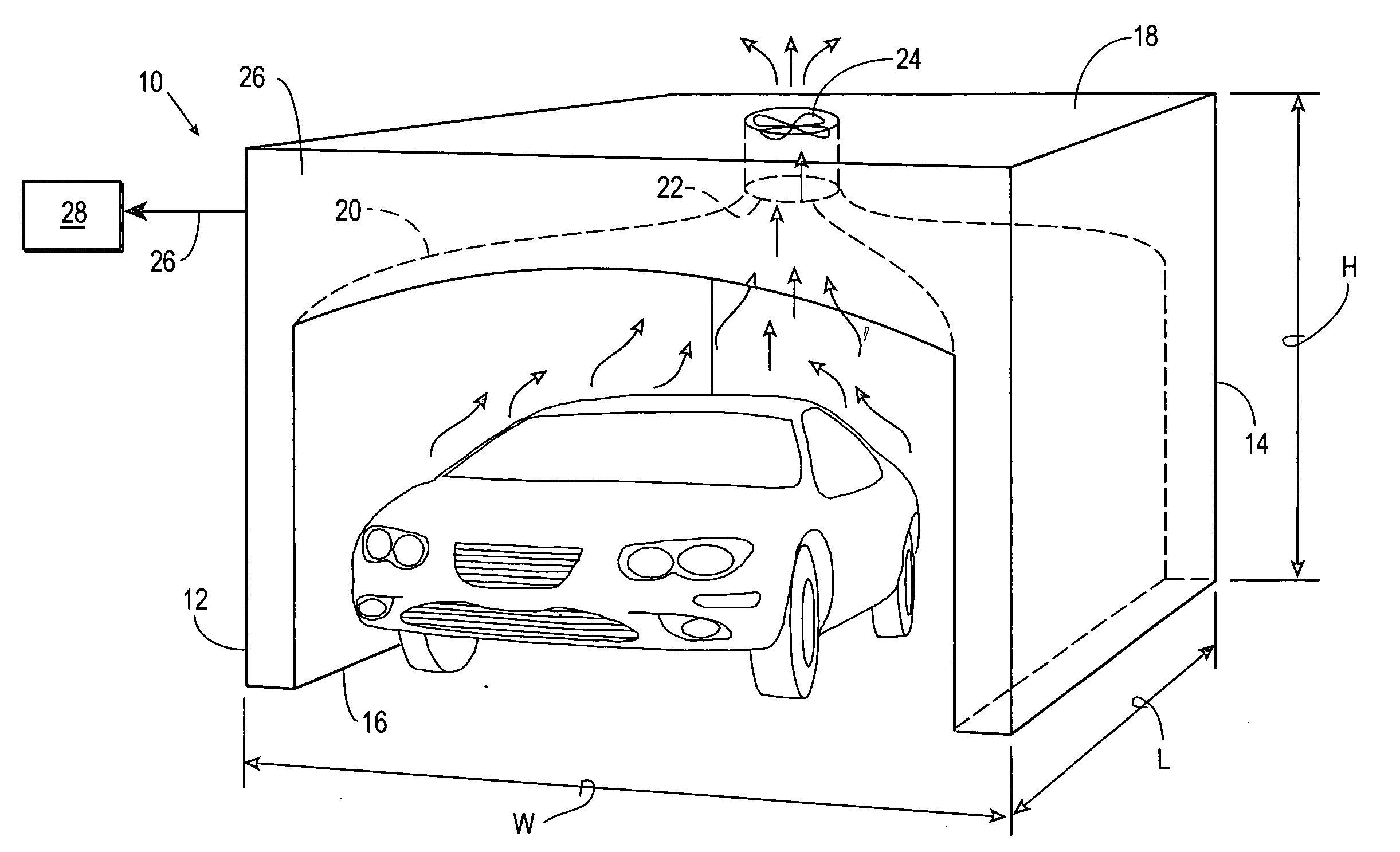Chemical trace detection portal based on the natural airflow and heat transfer of vehicles
a technology of natural airflow and vehicle heat transfer, applied in the field of vehicle thermal imaging portals, can solve the problems of inability to physically exist within the context of the concept of a “stagnant boundary layer” of explosive vapor on or near the vehicle, and the natural signal produced by the vehicle is too weak to detect, so as to achieve the effect of substantially improving the thermal imaging portal for vehicular subjects
- Summary
- Abstract
- Description
- Claims
- Application Information
AI Technical Summary
Benefits of technology
Problems solved by technology
Method used
Image
Examples
Embodiment Construction
[0037] The portals of the subject invention capitalize on physical phenomena identified by the inventors herein and illustrated schematically in FIG. 1. In particular, FIG. 1 depicts a vehicular subject S standing on a substantially horizontal floor G. The vehicular subject S typically will have a temperature that exceeds the temperature of the ambient air adjacent to the vehicular subject S. The vehicular heat of the vehicular subject S will cause a warming of air adjacent to the vehicular subject S. This warmed air will effectively define a boundary layer of warm air in close proximity to the vehicular subject S. Warm air is less dense than cooler air. As a result, warm air rises relative to cooler air. This known physical phenomenon causes the warm air boundary layer adjacent the vehicular subject S to gradually flow upwardly and through the cooler air at further distances from the vehicular subject S. This upwardly flowing air is identified by arrows “A” in FIG. 1 and collective...
PUM
| Property | Measurement | Unit |
|---|---|---|
| speed | aaaaa | aaaaa |
| settling speed | aaaaa | aaaaa |
| settling speed | aaaaa | aaaaa |
Abstract
Description
Claims
Application Information
 Login to View More
Login to View More - R&D
- Intellectual Property
- Life Sciences
- Materials
- Tech Scout
- Unparalleled Data Quality
- Higher Quality Content
- 60% Fewer Hallucinations
Browse by: Latest US Patents, China's latest patents, Technical Efficacy Thesaurus, Application Domain, Technology Topic, Popular Technical Reports.
© 2025 PatSnap. All rights reserved.Legal|Privacy policy|Modern Slavery Act Transparency Statement|Sitemap|About US| Contact US: help@patsnap.com



